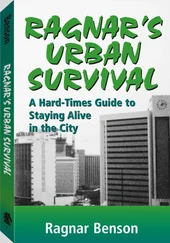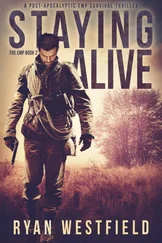Ragnar Benson - Ragnar's Urban Survival - A Hard-Times Guide to Staying Alive in the City
Здесь есть возможность читать онлайн «Ragnar Benson - Ragnar's Urban Survival - A Hard-Times Guide to Staying Alive in the City» весь текст электронной книги совершенно бесплатно (целиком полную версию без сокращений). В некоторых случаях можно слушать аудио, скачать через торрент в формате fb2 и присутствует краткое содержание. Год выпуска: 2009, ISBN: 2009, Жанр: Старинная литература, на английском языке. Описание произведения, (предисловие) а так же отзывы посетителей доступны на портале библиотеки ЛибКат.
- Название:Ragnar's Urban Survival: A Hard-Times Guide to Staying Alive in the City
- Автор:
- Жанр:
- Год:2009
- ISBN:1581600593
- Рейтинг книги:5 / 5. Голосов: 1
-
Избранное:Добавить в избранное
- Отзывы:
-
Ваша оценка:
- 100
- 1
- 2
- 3
- 4
- 5
Ragnar's Urban Survival: A Hard-Times Guide to Staying Alive in the City: краткое содержание, описание и аннотация
Предлагаем к чтению аннотацию, описание, краткое содержание или предисловие (зависит от того, что написал сам автор книги «Ragnar's Urban Survival: A Hard-Times Guide to Staying Alive in the City»). Если вы не нашли необходимую информацию о книге — напишите в комментариях, мы постараемся отыскать её.
Ragnar's Urban Survival: A Hard-Times Guide to Staying Alive in the City — читать онлайн бесплатно полную книгу (весь текст) целиком
Ниже представлен текст книги, разбитый по страницам. Система сохранения места последней прочитанной страницы, позволяет с удобством читать онлайн бесплатно книгу «Ragnar's Urban Survival: A Hard-Times Guide to Staying Alive in the City», без необходимости каждый раз заново искать на чём Вы остановились. Поставьте закладку, и сможете в любой момент перейти на страницу, на которой закончили чтение.
Интервал:
Закладка:
This brings us to realize that often within cities under attack, small groups of isolated infantry may possibly be taken out with no repercussions for the survivors. But the probability is that one never knows when this will be true: Battlefield communications capabilities are increasing dramatically. It is best not to count on this defense when other devices such as deep hiding are available.
City survivors who very cleverly hide their presence in unobtrusive, untargeted places often survive nicely. This will probably entail removing all signs of their retreat. They will have to learn the art of camouflaging and carefully hide all survival supplies-all signs of their presencewhile simultaneously not participating in the war raging about them.
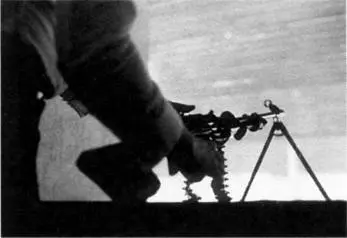
Small, individual actions fought with great intensity characterize urban combat.

Huge quantities of supplies will disappear during any urban combat situation. Survivors with their limited resources should think carefully before committing themselves to urban combat.
This is not easy. City survivors report that because of crowded living conditions, accompanied by great sanitary and disposal problems, retreats are frequently located by smell alone! Even cooking food among the smell of destruction can be an instant giveaway. Military targets in cities, when they are exposed, are most frequently visible at ranges of 100 meters or less. As a result, urban conflict tends to be low-tech. Infantry units will have to have some compelling reason to come into your immediate area; otherwise, your retreat may be completely overlooked.
Close, violent combat with light auto and semiauto weapons, flamethrowers, hand grenades, mines, and light antitank weapons (taking the place of artillery), is common in urban warfare. Obviously, many traditionally civilian weapons likely to be in the hands of urban survivors will work nicely in these situations. Defenders will not have to rely on standard military equipment to make an adequate showing. Knowing that the reliable, scope-sighted semiauto .22-caliber rifle could be used at the short ranges in cities to trump well-armed attackers is certainly a source of comfort.
Urban conflict is notorious for the vast, virtually disproportionate amount of munitions it chews up. Internal defenders without regular lines of resupply are at an advantage if they have enough prepositioned supplies. Theft of war materiel is a great concern for attacking forces, but since capturing enemy supplies is risky, experienced city fighters report that most of their stuff came from preexisting, internal stockpiles. Again, city survivors should only get involved if their most immediate area is compromised.
The rule of thumb in this case is that, again, city survivors should not get involved in battles. If they do, their precious private supplies will be quickly exhausted. Replacement by capture does not work and should not be part of a survival plan, experts claim.
This advice proved accurate in the reductiori of Berlin and Beirut, but not so accurate in the Warsaw Ghetto. Certainly it's a matter of how badly either side wants to continue to fight and what sorts of skilled manpower are available.
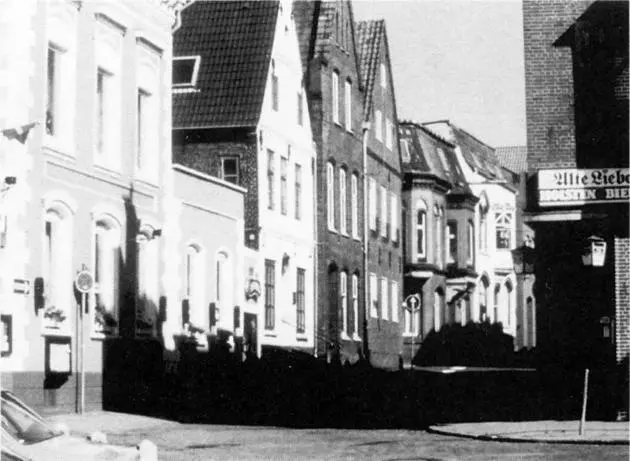
Modern cities have grown together, producing situations in which the military commanders will send their troops and equipment through buildings rather than down streets.
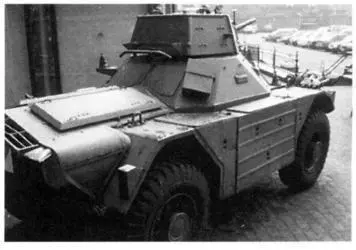
Armor used in cities can be decisive, but deployment always carries great risk.
City combat is different from combat in the countryside in some deadly regards. A veteran of World War II city fighting recalls that whenever a city had to be taken, he and his fellow soldiers never, never allowed themselves to be channeled down existing streets and roads when entering the city. Instead they used satchel charges, tank guns, and tanks as bulldozers to punch holes through lines of houses and through factories. By moving through the insides of existing structures they kept out of the enemy's sight and out of his ambushes, he said.
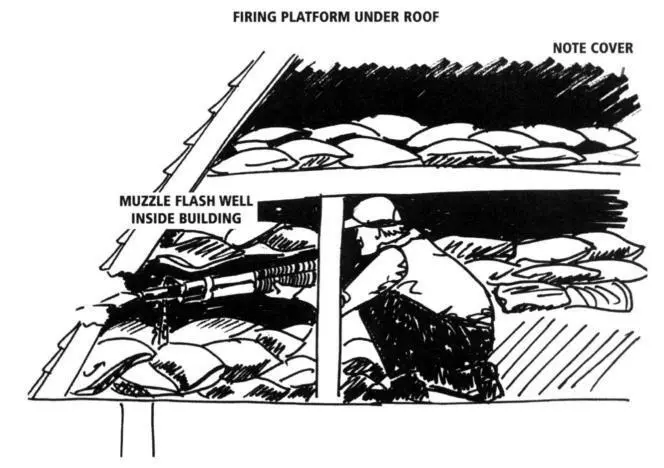
The top of a partially destroyed building can provide excellent cover.
But predictions are tough. Houses along main thoroughfares were often targeted, while those behind were frequently spared. Attacking soldiers also avoided remote neighborhoods where no obvious resistance was organized, especially if barriers and minefields were in place. Another lesson for city survivors.
Fortunes of war are indeed fickle. Absolutely no one can really know ahead if they will end up in harm's way. I think of the Englishman so disgusted by World War I he moved to a remote coaling station in the Pacific. Vessels had then begun to burn Bunker-C fuel, not coal, so "nobody will ever bother me here," he reasoned. But, of course, Midway Island became a major battleground in World War II.
As long as they are tall, buildings that are not strategic and less than dominant can successfully be turned into protected fortress-type structures for use by city survivors. Beirut provides several excellent examples. Survivors there often occupied apartments of high-rise buildings whose top two or three floors had been reduced to rubble, either intentionally or by enemy artillery fire. Layers of ruin above provided excellent protection from artillery or mortar fire, while both giving the impression of being a dead building and giving defenders high ground among protective rubble. But there were other considerations.
Was the building dam aged to the point of near-collapse? Some residents lived in great danger in this type of rubble. Additionally, past six or eight floors, walking up to an apartment on a daily basis becomes a real chore (obviously no elevators ran). Survivors argue both ways. While hauling in food and water was difficult, these buildings offered high-rise inaccessibility in uncontested neighborhoods and provided great security.
Some movement out of the retreat will be unavoidable. Know ahead that leaving the retreat is accompanied by great danger and that this must be planned for. Sending a boy or girl out for essential food, water, or medicine often presents an unacceptable risk, because torture is a common and, many claim, necessary element of urban warfare. I have spoken with German women who lived in Berlin at the time of the Soviet occupation, who recalled that if they were caught out on the street they were raped often six or eight times before escaping and hiding again.
Rubble produced by enemy artillery and air strikes can hinder the movement of attacking infantry while simultaneously providing cover for defenders. Attacking commanders often attempt to minimize this problem by ordering their troops to torch cities. The success of this device depends entirely on the type of construction and nature of building contents. Under the wrong circumstances there is little to be done to save one's city, urban survivors claim. Some survivors report having been able to remove combustibles while simultaneously putting out fires as they started. Others took shelter in fire-resistant buildings.
With the battle past, some even re-established living quarters in fire-gutted buildings. This doesn't sound terribly practical, but many of these folks reported living through what seemed like horrible, large, citywide fires.
Читать дальшеИнтервал:
Закладка:
Похожие книги на «Ragnar's Urban Survival: A Hard-Times Guide to Staying Alive in the City»
Представляем Вашему вниманию похожие книги на «Ragnar's Urban Survival: A Hard-Times Guide to Staying Alive in the City» списком для выбора. Мы отобрали схожую по названию и смыслу литературу в надежде предоставить читателям больше вариантов отыскать новые, интересные, ещё непрочитанные произведения.
Обсуждение, отзывы о книге «Ragnar's Urban Survival: A Hard-Times Guide to Staying Alive in the City» и просто собственные мнения читателей. Оставьте ваши комментарии, напишите, что Вы думаете о произведении, его смысле или главных героях. Укажите что конкретно понравилось, а что нет, и почему Вы так считаете.


